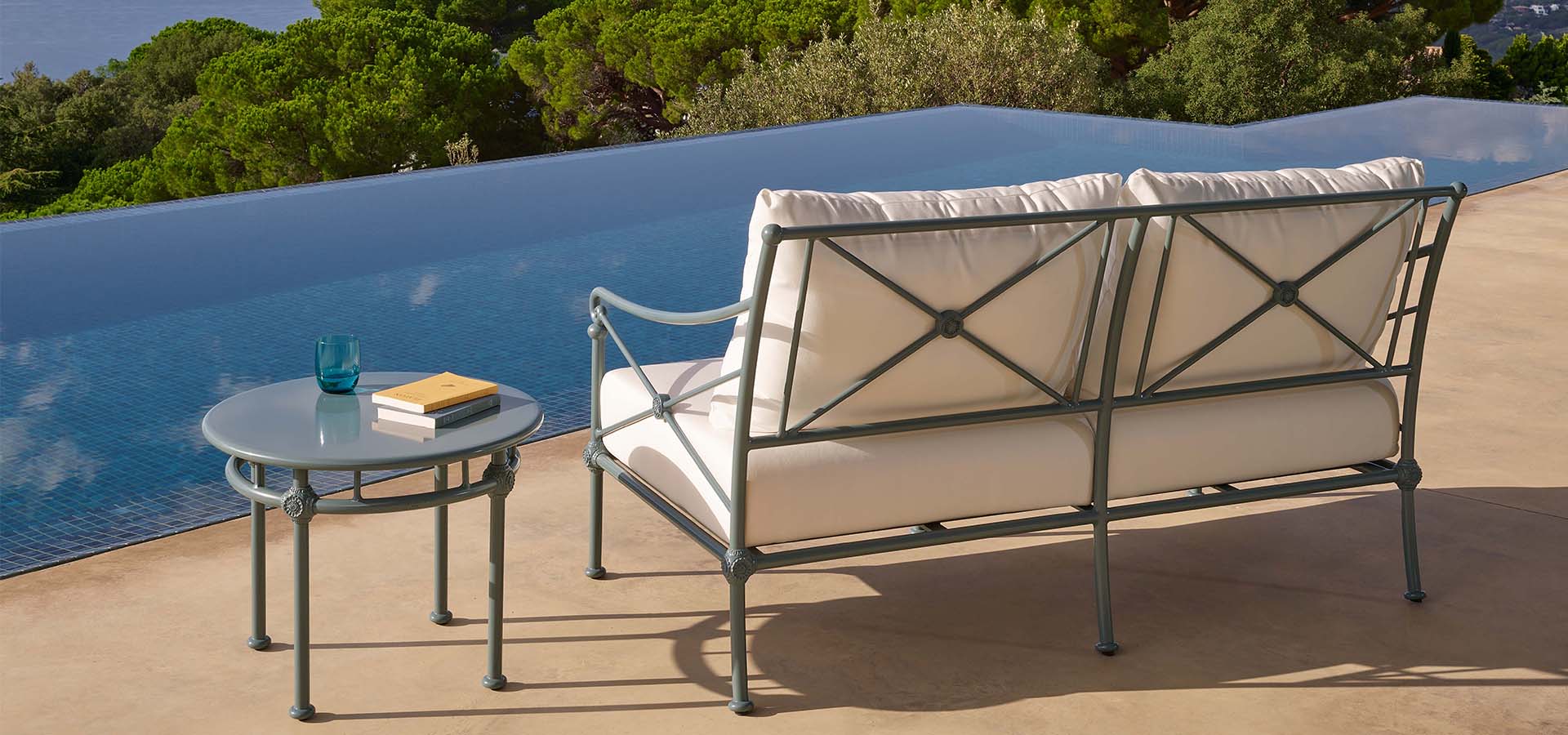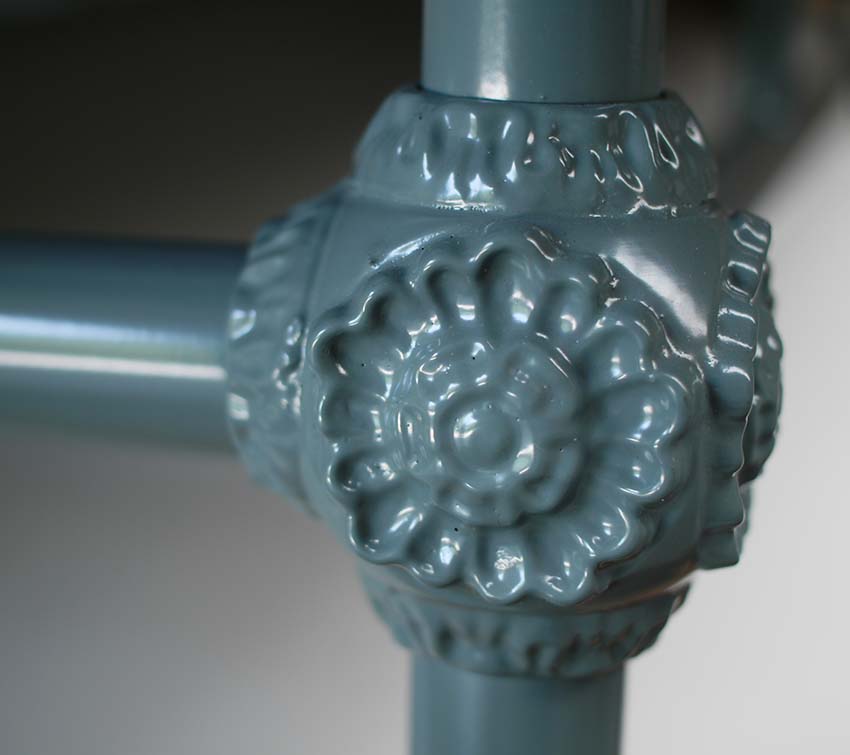
Text by Dany Sautot
Secrets of fabrication of the 1800 collection
The bench in the Directory style acquired by Tectona in 2004 would give rise to the now-iconic 1800 collection; below we reveal some secrets of its fabrication.

The genesis of the 1800 collection
The bench is from the home of the famous decorator Madeleine Castaing (1894-1992) in Lève. The neoclassic Directory style heavily influenced furniture between 1789 and 1803. Inspired by Antiquity, these pieces of furniture had simple lines and featured ornamentation that was both refined and discreet. The sober lines of the bench inspired the 1800 collection, the first models of which appeared two years later.
Blue-grey : The Tectona colour
Thanks to the use of aluminium in the 1800 collection, the Tectona colour palette was enriched in 2006. The colour is obtained by powder coating, a process in which paint in powder form is projected onto metal via an electrostatic effect, and subsequently polymerises when passed through an oven at 200 °C. This technique not only gives a durable colour to the furniture but reinforces its shock resistance. Inspired by historical English colours, the blue-grey tone developed by the Tectona Workshop became the brand’s signature, and was followed a few years later by the colour black.

From wrought iron to aluminium : the contemporary touch
Although the classic forms are conserved, the bench has been made lighter by replacing the original wrought iron with aluminium. The Tectona Workshop knows this metal inside out: aluminium has a density one third that of teak, making it ideal for furniture that is easy to move around. In addition, it is resistant to all types of corrosion and is waterproof.
Classic and contemporary, 1800 meets the needs of people looking for outdoor fur-niture that is simply attractive, easy to use, weather-resistant and fits into any setting, whether urban or rural.

Sculpting the decor : art and craft
The rigorous lines of the 1800 collection are softened by the various decorative motifs: the flowers and rings at the intersections between the aluminium elements, the stylised swan-neck armrests of the armchairs. Each decorative element is first sculpted at its actual size in lime tree wood, then an elastomer mould is taken. Next, a resin replica is made and a metal mould created using the “cire perdue” technique. Molten aluminium is cast into this mould; once cooled, deburring removes the traces of the casting technique.
